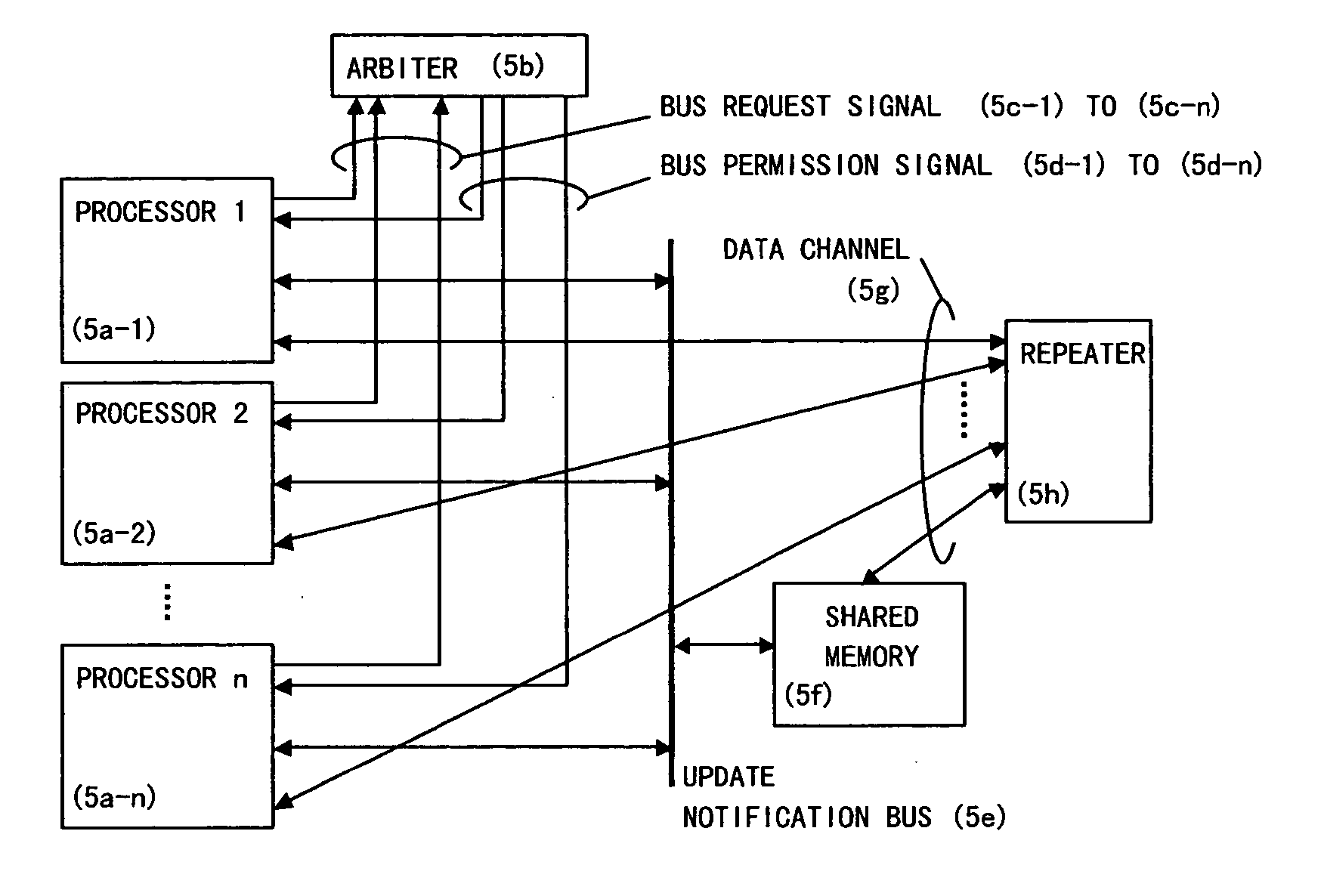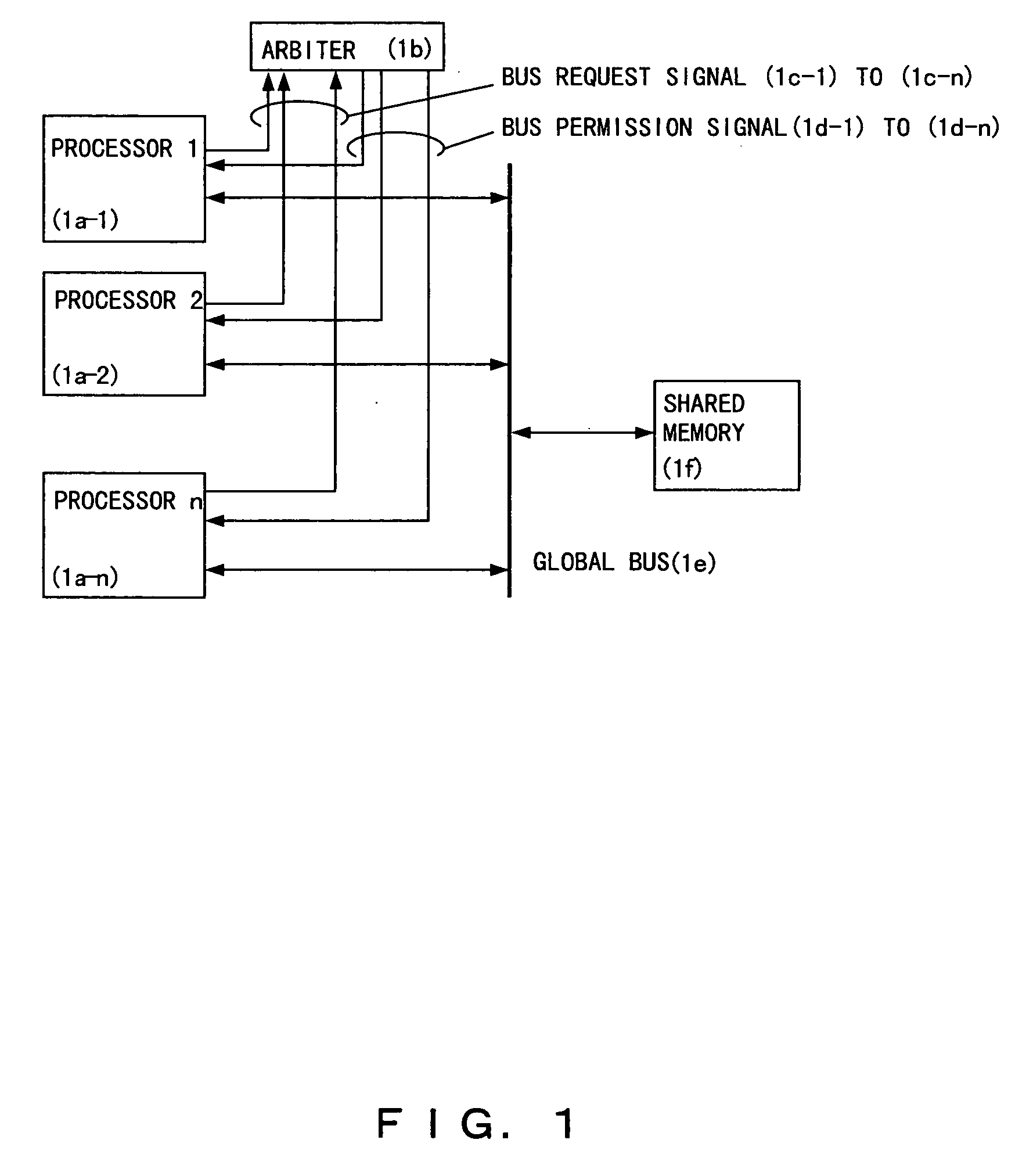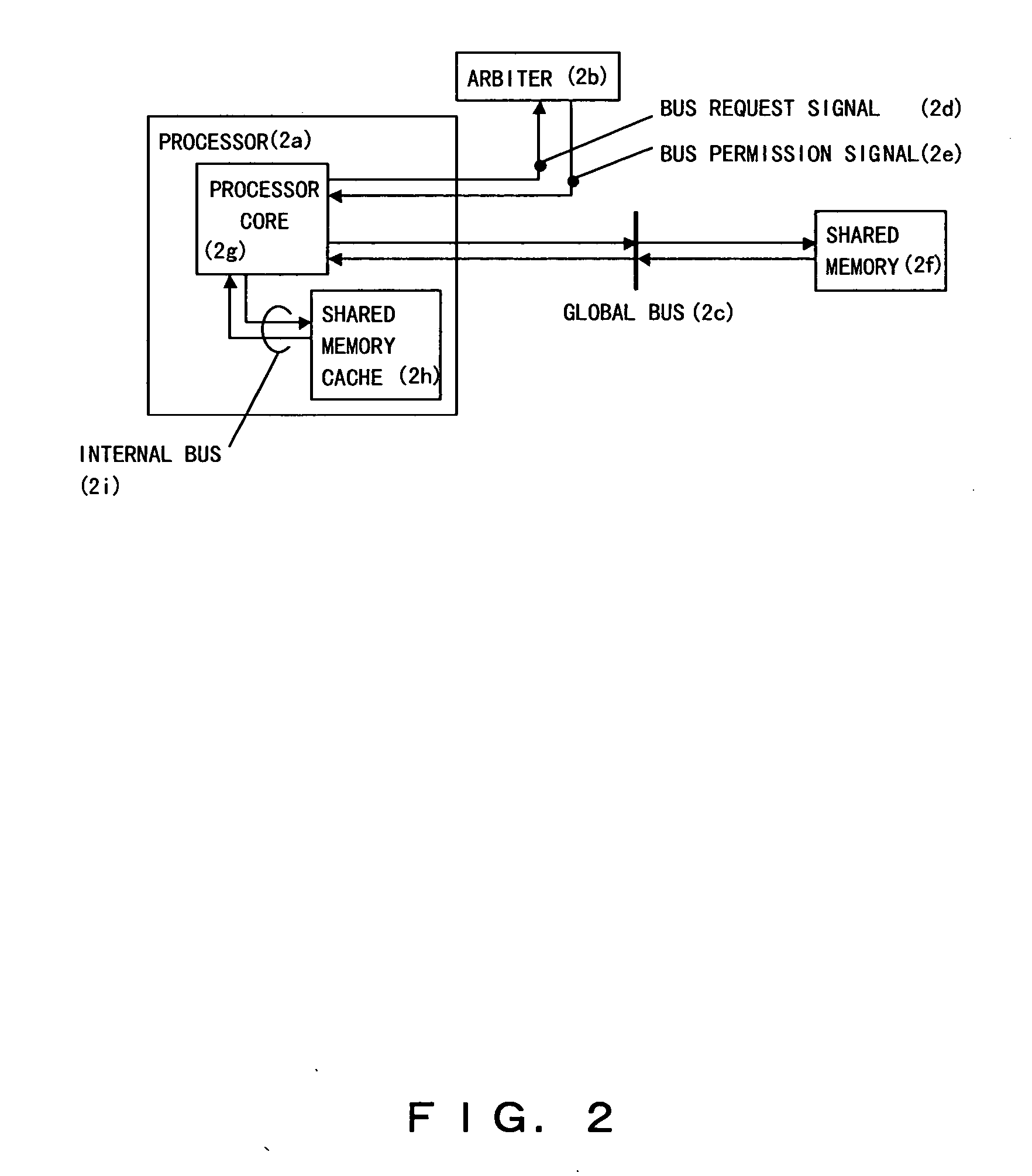Multi-processor system
a multi-processor and memory type technology, applied in the field of shared memory type multi-processor systems, can solve the problems of difficult high-speed transmission of signals, difficult control of coherence, and obstacle to solving problems, and achieve the effect of shortening the time, increasing the speed of transmission and reception of updated data
- Summary
- Abstract
- Description
- Claims
- Application Information
AI Technical Summary
Benefits of technology
Problems solved by technology
Method used
Image
Examples
first embodiment
[0069] Described below is the principle of the present invention in the present invention. In FIG. 5, the part which corresponds to the global bus in a conventional example is an update notification bus (5e), which is used as a bus for exclusively performing a data update notification and a transmission request of updated data. The contents of the updated data are transmitted and received using a data channel (5g) between the update notification bus (5e) and a repeater (5h). The data channel is assumed to be a high-speed broadband transmission means which is already known of (for example, Gigabit Ethernet). The repeater (5h) has a function for transmitting data which appears on each port to which the data channel is connected to all the ports. If the number of processors is small, and a realistic number of data channels suffice, data channels can be provided in 1:1 between all the processors and the shared memory without providing a repeater, and the processing of transmitted data f...
second embodiment
[0078]FIG. 7 shows an example of a time chart of the processing based on the present invention.
[0079] In FIG. 7, data update is performed every four addresses. The update notification which processor 1 and processor 2 transmit is transmitted by indicating the top of the address to be updated, and updated data of the corresponding address is transmitted as a block of data.
[0080] If a data update is performed with a fixed data length, data updates including a group of data which are not required because of software processing must sometimes be performed, so that there is a possibility that the data channel and the bandwidth of the shared memory cache are wasted and the effective bandwidth is reduced. Thus, the system is configured so that the updated data size may be variable and only necessary and sufficient data may be transmitted to the data channel.
[0081]FIG. 8 shows an example of a time chart when data update is performed in differing data sizes. In FIG. 8, the difference from ...
third embodiment
[0083] The principle of the present invention is that a processor makes it possible to select the attribute of whether the control of coherency is necessary or not in every write access, does not issue an update notification of write accesses for which the attribute of the control of coherency is designated as not necessary, and controls transmitting only updated data to the other processors. There are some uses of the shared memory space for which the guarantee of coherency is not required according to the processing contents of software. Thus in this embodiment software uses this control for such processing, decreases the frequency of using an update notification bus, improves the bandwidth of the shared memory space, shortens the time in which updated data is reflected to the other processors, and restrains the increase of latency due to the occurrence of unnecessary access competition to a necessary minimum to decrease the average latency of read accesses.
[0084]FIG. 9 shows an e...
PUM
 Login to View More
Login to View More Abstract
Description
Claims
Application Information
 Login to View More
Login to View More - R&D
- Intellectual Property
- Life Sciences
- Materials
- Tech Scout
- Unparalleled Data Quality
- Higher Quality Content
- 60% Fewer Hallucinations
Browse by: Latest US Patents, China's latest patents, Technical Efficacy Thesaurus, Application Domain, Technology Topic, Popular Technical Reports.
© 2025 PatSnap. All rights reserved.Legal|Privacy policy|Modern Slavery Act Transparency Statement|Sitemap|About US| Contact US: help@patsnap.com



